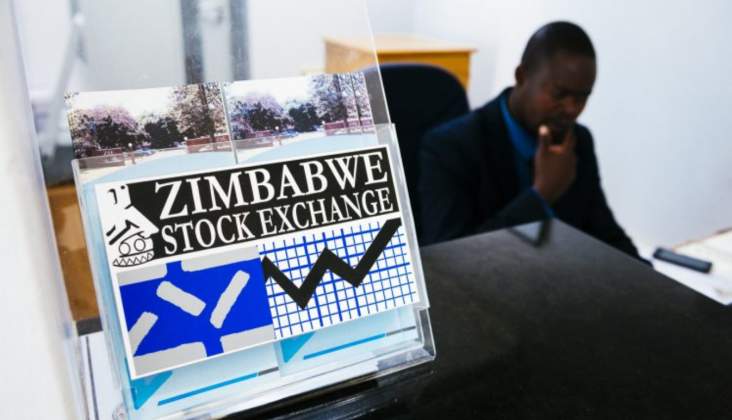Power situation likely to remain bleak
Zimbabwe’s power supply situation will remain bleak in the short-term, amid revelations that the usable water level at Kariba Dam, the country’s second-largest power station, has plummeted to below 3 percent and may not register significant inflows until February/March 2025.
Kariba Dam, which gets a mere 20 percent of its inflows from the domestic catchment area, normally receives its peak inflows around May/June annually, making a quick return to depending on its hydropower unlikely.
But Energy and Power Development Minister Edgar Moyo was defiant, telling this publication yesterday that the power situation would improve soon once the refurbishment of Hwange Power Station’s old generators is completed and industrial consumers and schools shut down for the festive and school holidays, cutting demand.
Other planned and ongoing short-term solutions, according to Minister Moyo, include taping generation from the miniscule production of independent renewable energy projects and the repowering of the old generation units at Hwange Power Station.
Zimbabwe’s peak demand for power stands at about 2 200 megawatts (MW) against installed capacity of 2 700MW.
The deficit arises due to various factors that include limited output due to low water level at Kariba, frequent breakdowns at Hwange Power Station, the country’s largest power plant, which are caused by advanced plant age and limited funding needed to keep the power station in healthy condition.
Given Zimbabwe has to depend on Hwange for both based-load and peak demand, Zimbabwe will likely continue to face an acute deficit, which has spawned rolling power cuts, which may be as long as 18 hours a day.
Hwange, which has rated capacity of 1 520MW, following the expansion completed last year to add 600MW, was producing just above half its potential yesterday, at 889MW.
According to the latest update by the Zambezi River Authority (ZRA), which manages the affairs of the Zambezi River, as of November 11, 2024, the Kariba Dam’s water level had plunged to just 2,40 percent of usable (live) water compared to 10,72 percent on the same date in 2023.
In volume terms, the live water, which refers to water available for power generation, stood at 3,72 billion cubic metres (CBM) compared to 16,57 billion (CBM) at the same stage last year.
Designed to operate between 478,5 metres when full and 475,5m, the lowest level of water available for electricity generation, Kariba Dam water level has dropped to 476m, compared to 477,8m around the same period last year.
With the water level critically low, Zimbabwe was yesterday producing just 100MW from Kariba, a 1050MW-rated energy facility, demonstrating the extent to which it has scaled down output.
Zambia, with which Zimbabwe shares the world’s largest man-made dam, has already stopped production from Kariba Dam’s northern bank, its largest source of energy, plunging the country into power cuts lasting as much as 21 hours.
ZRA has allocated 27 billion cubic metres, roughly the amount each country gets for Kariba on a good season of sufficient water, for power generation next year, to be split equally between the two neighbouring states. The river authority said the allocation will be reviewed in the first quarter of next year.
While it was widely expected the region would experience normal to above-normal rainfall, following the El Nino-induced drought in 2023/24, which would augur well for the Kariba Dam’s water situation and power generation in Zimbabwe and Zambia, there are fears this may no longer be the case.
During the Southern African Climate Outlook Forum (SARCOF) held in Harare, in August this year, local, regional and international weather experts forecast a good upcoming rainfall season for the Southern African Development Community (SADC) region, which includes the Kariba Catchment.
Furthermore, it was indicated that the season would commence during the last quarter of 2024.
In addition to the SARCOF projections, the meteorological departments of Zambia and Zimbabwe provided the associated downscaled forecasts.
Both forecasts indicate that the Kariba lower catchment (covering northern Zimbabwe) and the north-eastern Angola section of the Zambezi River catchment are likely to receive below-normal rainfall from October 2024 to January 2025.
“This could negatively impact river inflows into Lake Kariba during that period,” ZRA said in a statement dated October 4, 2024.
In view of these forecasts, the ZRA conducted hydrological simulations using its state-of-the-art lake-inflows forecasting system to determine the quantity of water to be allocated for power generation at Kariba Dam for the year 2025.
Consequently, upon undertaking consultations with both Zambia’s power utility ZESCO Limited and the Zimbabwe Power Company, ZRA said it was agreed that a total of twenty-seven billion cubic metres (27 CBM) of water will be allocated for power generation at Kariba Dam for the year 2025.
Ordinarily, Kariba South alone requires roughly 25 billion cubic metres to run full throttle over 12 months. Ex-Zesa chief executive Joshua Chifamba said in an interview with this publication that the allocation by ZRA “ was not enough” to utilise Kariba South’s full capacity of 1050MW.
He noted that a huge part of Zesa’s challenges in maintaining optimum output from Hwange, Zimbabwe’s largest energy facility, related to the lack of funding.
Chifamba said the State power utility needed to adopt a tariff model based on US dollar currency to keep pace with the wear and tear of its old power plants.
“I think the problem at Zesa are exchange losses. At the moment, imagine the amount of arbitrage that is taking place, looking at the exchange rate of the ZiG on the black market.
“This is not good for them yet all their obligations are in US dollars,” he said. “Each time there is a devaluation, like the one that happened in October, imagine what happens to their debtors. Many of their debtors are in ZiG; they lose value in a very serious way when there is devaluation of the (local) currency,” said Chifamba.
“That is why I think electricity should be treated the same way as fuel,” which is sold in US dollars only.
Chifamba said Zimbabwe will not be able to significantly ramp up power output at Kariba until several months into next year, given the reservoir will only receive maximum inflows around May/June.
This is because the main source of the inflows are the marshy plains in northwestern Zambia, which must get saturated first before they start spilling into the Zambezi River drainage systems.
However, Minister Moyo said Zimbabwe and Zambia faced an acute power deficit situation, which the countries would deliberate at the Zimbabwe-Zambia Energy Summit from November 18-20,2024.
“This thing was conceptualised so that we can bring the two countries together and bring in energy investors and energy financiers, developers and experts to find solutions.
“Basically, we are responding to the risky environment we are facing in terms of energy that we are in so that we plan for solving currency and future problems,” he said.
“In terms of short-term solutions; we are already working on them, but (regarding the energy summit) we are looking at energy security going forward.
“In terms of the short-term solutions, we are currently working on rehabilitating units 1-6. Currently, three are in service and three are being attended to so that in the short term we can increase our power supply from those units.
“Second, we have solar projects that are ongoing and they are at different stages of development. Some of them are going to be commissioned before the end of the year, some are going to be started, others are going to be developed further.
“So, these are a host of actions that we are taking to address immediate challenges.
“ As soon as we are able to bring Hwange 1-6 units into service, we will be able to get some relief (from power cuts) and this relief is going to be assisted by the annual shutdown when schools close; when industries have their annual shutdowns, there is going to be depressed demand,” he said.
However, Chifamba said solar energy, while helpful, would not bring as much relief and reliability as thermal power stations. He said such projects were only ideal as complementary solutions.-ebsinessweekl











